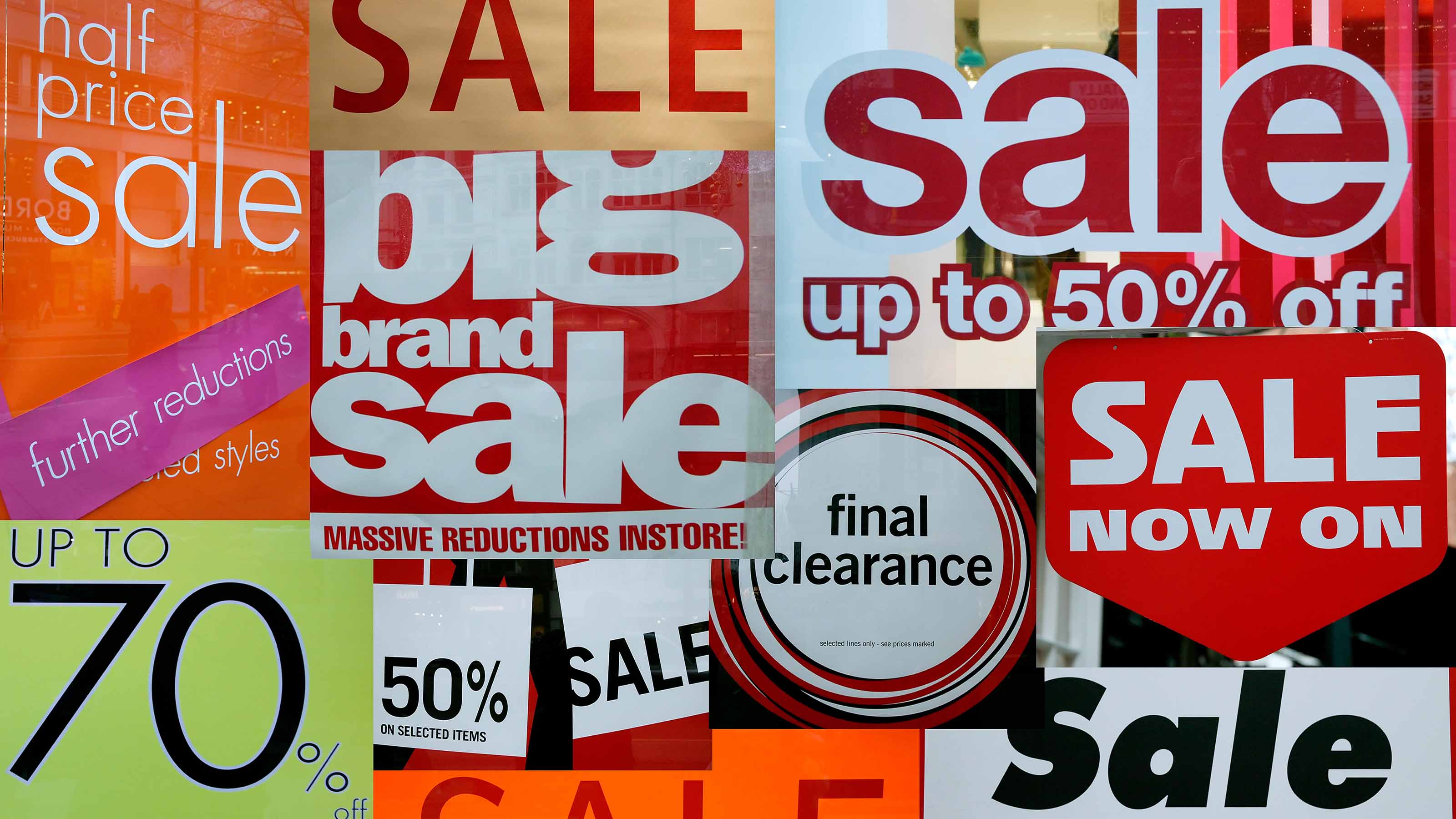ETFs Can Do It All
Exchange-traded funds are easy to trade and offer you an affordable way to build a diversified portfolio.

Invented only about two decades ago, exchange-traded funds should be part of every serious investor's portfolio. In fact, a diversified batch of well-chosen ETFs can make up your entire portfolio.
The growth of ETFs has been breathtaking. In January 2009, there were 856 ETFs and exchange-traded notes (which I'll discuss below). By the end of March, the number had jumped to 1,173 -- a gain of 37% in little more than two years. Assets under management now top $1 trillion.
The Basics
An ETF is a basket of stocks, bonds or other assets. But unlike a mutual fund, an ETF trades, as the name implies, on a stock exchange rather than directly through an investment firm. Unlike closed-end funds, which also trade on exchanges, an ETF is designed so that its share price is very close to its net asset value (NAV) per share -- or the market value of all the shares (or other assets) held by the fund divided by the number of shares outstanding. In other words, with an ETF, what you want is what you get.
From just $107.88 $24.99 for Kiplinger Personal Finance
Become a smarter, better informed investor. Subscribe from just $107.88 $24.99, plus get up to 4 Special Issues

Sign up for Kiplinger’s Free Newsletters
Profit and prosper with the best of expert advice on investing, taxes, retirement, personal finance and more - straight to your e-mail.
Profit and prosper with the best of expert advice - straight to your e-mail.
Closed-ends, by contrast, can trade at big discounts or premiums to their NAVs. But ETFs have a unique structure that allows shares to be created or retired continually. As a result, when the market price gets a bit out of line with the NAV, big investors come in to buy or sell to bring the price back to reality. In addition, nearly every ETF is based on an index -- a set of assets chosen using a formula -- while most mutual funds and closed-ends are actively managed by experts (or pseudo-experts) who buy and sell according to their own criteria.
But forget the mechanics. It's the simplicity of ETFs that makes them so appealing. You can trade them easily, their fees are usually low, and they come in an incredible variety of flavors.
One of the drawbacks of ETFs is that investors typically have to pay commissions for each purchase or sale, as they do with stocks. But even that obstacle is disappearing. Fidelity, Schwab, TD Ameritrade and Vanguard all waive commissions on a limited -- but growing -- number of ETFs. Fidelity's list now includes its own Nasdaq Composite Tracking Stock (symbol ONEQ), as well as 30 products sponsored by iShares, the largest ETF purveyor and a unit of giant asset manager BlackRock.
Among those iShares offerings are Dow Jones U.S. Real Estate (IYR), whose portfolio includes 82 real estate investment trusts and stocks of building-products manufacturers, mortgage companies and other firms in the industry; MSCI All-Country World Index, ex-U.S. (ACWX), which consists of foreign global giants, such as Samsung (SMSN) and Vodafone (VOD); and Dow Jones Select Dividend (DVY), which owns stocks that emerge from a formula that favors high dividend yields and growth rates and low payout ratios (that is, the proportion of a company's earnings that it sends to investors). None of these ETFs carries an expense ratio higher than a half-percentage point.
The behemoth among ETFs, with $93 billion in assets, is SPDR S&P 500 (SPY), whose shares are affectionately known as Spiders. Launched in 1993 and carrying an annual expense ratio of just 0.09%, Spiders are a cheap, easy way to buy into 500 of the largest U.S.-headquartered companies based on capitalization (or shares outstanding multiplied by stock price). Top holdings include Exxon-Mobil (XOM), Apple (AAPL) and General Electric (GE). If you want to own only one security to represent the U.S.-stock portion of your portfolio, buy SPY or the identical (down to the same fees) iShares S&P 500 Index Fund (IVV).
But it is the proliferation of ETFs that is so valuable to investors. Everyone can now afford -- in both time and expense -- to develop a widely diversified portfolio. Here are some examples of ETF variety.
Currencies
Worried that the dollar will plunge still lower? Rather than buying currencies from individual foreign countries, consider an ETF packaged by WisdomTree, a firm started by hedge fund manager Michael Steinhardt and Jeremy Siegel, the financial scholar and Kiplinger's contributor. One of my favorites is WisdomTree Dreyfus Emerging Currency (CEW), which invests in an index that tracks currencies of developing markets such as China, Brazil, India and Turkey. Or you can buy an ETF that features, say, the Chinese yuan, the Japanese yen or the euro individually.
Bonds
To protect against heightened stock-market risk, which I see continuing for many years, investors would be wise to increase the share of bonds in their portfolios, although you should keep your maturities short. Again, ETFs are a handy tool. Examples include SPDR Barclays Capital Intermediate-Term Corporate Bond (ITR), with an average maturity of 5.2 years, and iShares Barclays 1-3 Year Credit Bond Fund (CSJ), with an average maturity (not surprisingly, in light of its name) of 2.0 years. The ETFs charge just 0.15% and 0.2% per year, respectively.
Commodities
I am not a fan of commodities per se. I prefer to invest in the human imagination rather than in things (see Buy Commodity Stocks). But clearly commodities have done well lately, and ETFs offer a relatively cheap way to play the game. In the past, the only way most investors could buy commodities was to purchase the physical stuff (say, gold coins) or to trade risky futures contracts. Now, you can simply buy shares in an ETF such as PowerShares DB Commodity Index Tracking (DBC), which tracks a commodity index constructed by Deutsche Bank.
Be aware that the fund has lost an annualized 9.5% over the past three years through May 6, and that its annual expense ratio of 0.85% is high for an ETF. Also understand that there's no agreement on what should go into a commodity index. The GSCI index, for example, is heavily weighted toward energy, so it has missed out on the big run-up in precious metals.
If you want to own gold alone, then try iShares Gold Trust (IAU), with an annualized return of 18.9% over the past three years and yearly fees of just 0.25%. It's a popular ETF, with more than $6 billion in assets, and slightly cheaper than its larger rival, SPDR Gold Shares (GLD).
Private Equity
Exchange-traded notes behave like ETFs but are structured as bonds that pay interest based on the returns of their underlying index. Some ETNs are linked to exotic and intriguing investments. For instance, UBS recently launched an ETN whose returns are based on the results of an index that is linked to private-equity investments and debt issued to early-stage businesses. The ETN's name is absurdly clunky: E-TRACS Linked to the Wells Fargo Business Development Company Index (BDCS); although risky, it provides a means to profit from new ventures and turnarounds. It's worth making it a tiny part of your portfolio.
Watch out when investing in ETNs. The guarantor of the debt is the investment company issuing the notes, and, as we saw with Lehman Brothers, such companies can fail. And beware leveraged ETFs, which are designed to return two times or even three times the returns of an index on a daily basis. The risks are great, and because of the peculiar math of daily compounding, you can guess right on an asset class and still lose money -- sometimes a lot of it -- if you hold the ETF for months or longer.
Potpourri
A miscellany of ETFs I recommend for a diversified, long-term portfolio includes: Global X China Consumer (CHIQ), which focuses on Chinese companies that sell mainly to Chinese customers, with an expense ratio of 0.65%; First Trust Dow Jones Select Microcap Index (FDM), consisting of 204 stocks with an average capitalization of just $469 million, 0.60%; SPDR S&P Dividend (SDY), which includes the 50 highest-yielding companies in the S&P Composite 1500 index (which includes stocks of large, midsize and small companies) that have raised their dividends for at least 25 years in a row, 0.35%; and SPDR Dow Jones Industrial Average (DIA), or Dow Diamonds, which holds the 30 stocks in the Dow Jones industrial average, 0.18%.
Who needs stocks? Or bonds? Or currencies, for that matter? With well-chosen ETFs, you can have them all, and at an attractive price.
James K. Glassman, executive director of the George W. Bush Institute in Dallas, is author, most recently, of Safety Net: The Strategy for De-Risking Your Investments in a Time of Turbulence (Crown Business). He owns Spiders.
Profit and prosper with the best of Kiplinger's advice on investing, taxes, retirement, personal finance and much more. Delivered daily. Enter your email in the box and click Sign Me Up.

-
 Is Home Insurance Tax Deductible?
Is Home Insurance Tax Deductible?With home insurance rates on the rise, you might be hoping to at least claim the cost as a tax deduction. Here's what you need to know ahead of tax season.
-
 The December Jobs Report Is Out. Here's What It Means for the Next Fed Meeting
The December Jobs Report Is Out. Here's What It Means for the Next Fed MeetingThe December jobs report signaled a sluggish labor market, but it's not weak enough for the Fed to cut rates later this month.
-
 Trump Signals Plan to Ban Institutional Investors From Buying Single-Family Homes
Trump Signals Plan to Ban Institutional Investors From Buying Single-Family HomesThe president says the move could improve housing affordability. Here’s what the data shows about investor ownership, recent buying trends and what it could mean for homebuyers.
-
 5 Big Tech Stocks That Are Bargains Now
5 Big Tech Stocks That Are Bargains Nowtech stocks Few corners of Wall Street have been spared from this year's selloff, creating a buying opportunity in some of the most sought-after tech stocks.
-
 How to Invest for a Recession
How to Invest for a Recessioninvesting During a recession, dividends are especially important because they give you a cushion even if the stock price falls.
-
 10 Stocks to Buy When They're Down
10 Stocks to Buy When They're Downstocks When the market drops sharply, it creates an opportunity to buy quality stocks at a bargain.
-
 How Many Stocks Should You Have in Your Portfolio?
How Many Stocks Should You Have in Your Portfolio?stocks It’s been a volatile year for equities. One of the best ways for investors to smooth the ride is with a diverse selection of stocks and stock funds. But diversification can have its own perils.
-
 An Urgent Need for Cybersecurity Stocks
An Urgent Need for Cybersecurity Stocksstocks Many cybersecurity stocks are still unprofitable, but what they're selling is an absolute necessity going forward.
-
 Why Bonds Belong in Your Portfolio
Why Bonds Belong in Your Portfoliobonds Intermediate rates will probably rise another two or three points in the next few years, making bond yields more attractive.
-
 140 Companies That Have Pulled Out of Russia
140 Companies That Have Pulled Out of Russiastocks The list of private businesses announcing partial or full halts to operations in Russia is ballooning, increasing economic pressure on the country.
-
 How to Win With Game Stocks
How to Win With Game Stocksstocks Game stocks are the backbone of the metaverse, the "next big thing" in consumer technology.